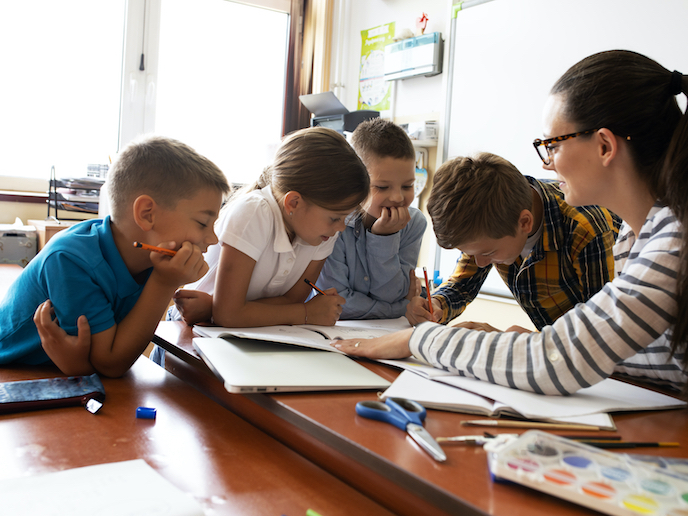Wearable sensors aid learning for children with autism and learning difficulties
Children with autism and learning difficulties can face difficulties with communication, meaning teaching them can be challenging. One way to assess learning progress is by measuring social engagement: how much children connect and coordinate with adults and each other. Monitoring this through observation alone can however be tricky. “At the moment, the only way to track children’s behaviour in the classroom is for an observer to watch the children, either live or on video, and write down everything the child does,” explains Antonia Hamilton(opens in new window), professor of Social Neuroscience at University College London. “This is slow, expensive and inefficient,” she says. Hamilton is the project coordinator of the European Research Council(opens in new window) funded SocSensors project, which has developed an efficient new solution based on wearable sensors. “If we can build sensors that can work automatically, it will be possible to collect a lot of data on social engagement in children with very little effort,” Hamilton adds. SocSensors built on a previous EU-funded project, INTERACT, which investigated movement coordination and imitation in autistic and neurotypical(opens in new window) adults. SocSensors develops this work further by tracking the movements of both teachers and children in a real-world environment. “We focused on children with autism and learning difficulties because this group has limited language skills and can’t tell us things, but needs extra support,” notes Hamilton. “Also, these children are neglected in most research projects.”
Tracking social engagement
The wearable sensor system is worn on the wrist like a watch, meaning the researchers can easily track movements of each person in relation to each other. The monitoring is unobtrusive, and generates large amounts of synchronised data. By analysing this, the researchers can build a detailed picture of social engagement. “We are interested in capturing all kinds of social behaviour – this could be jumping up and down together or clapping along to a song or passing a ball, or anything that is coordinated between people,” explains Hamilton.
Pandemic challenges
The COVID-19 pandemic affected the SocSensors project, as many schools across the United Kingdom faced long and repetitive closures. The SocSensors team pressed on despite this, and through flexible scheduling were able to run several trials with children in schools. “So far, we have collected a large sample of data and have found out which designs of sensors and wristbands are preferred by the children. Unsurprisingly, different children like different things, and this data will help us build better sensors,” remarks Hamilton.
Further research into social engagement
“I’m proud of the research team for getting everything done in very difficult circumstances,” she adds. “I’d like to thank the schools and children and parents who have worked closely with us throughout this project – their input and support have been invaluable.” The team secured additional funding to progress with the project and develop the ideas further. The researchers will analyse the data to get the best possible measure of social engagement. “We are also working with local industry collaborators to develop sensors that the children will enjoy wearing,” Hamilton says.







